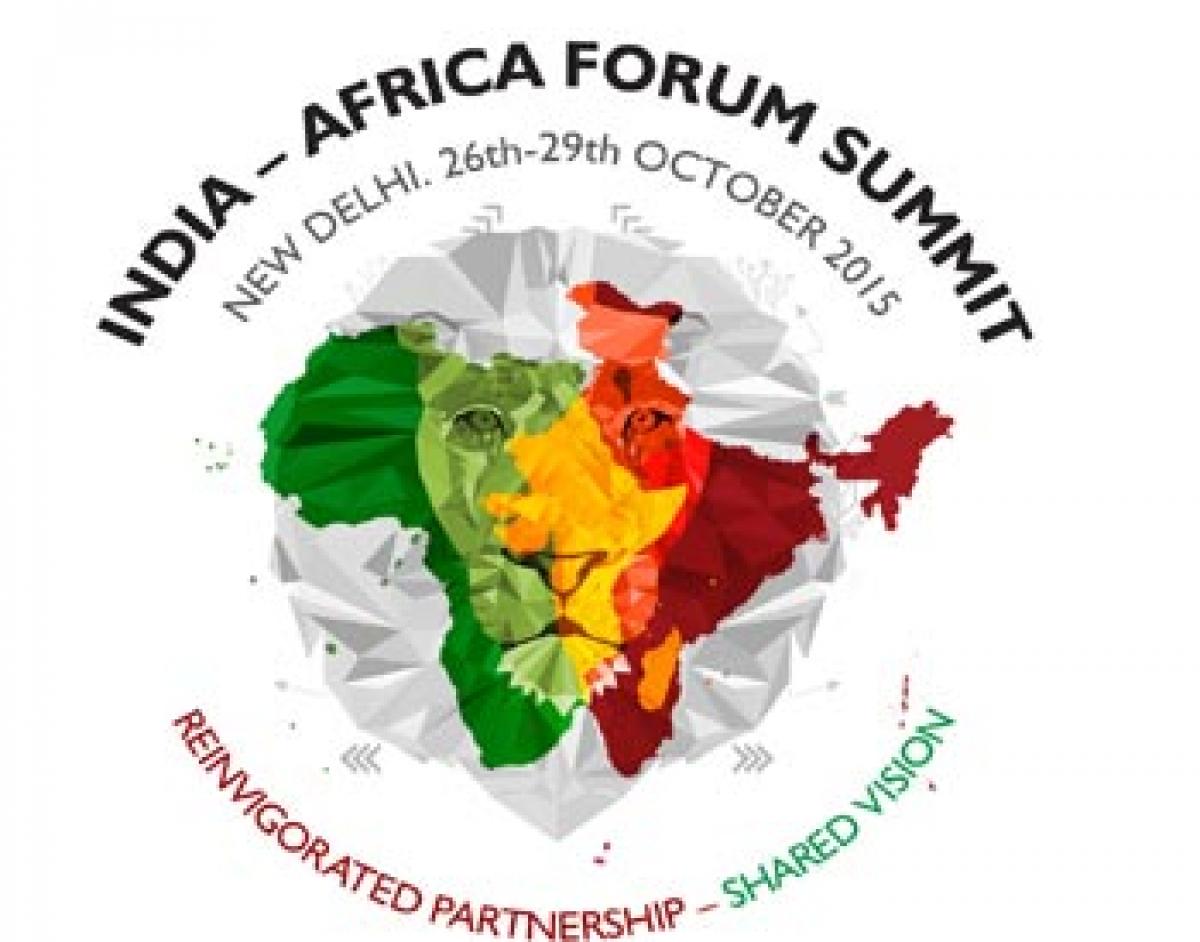Live
- GMR Airports Unveils AI-Powered Digital Twin Platform to Transform Airport Operations
- India poised to become leading maritime player: PM Modi
- Top Causes of Kidney Stones and How to Recognize Silent Symptoms
- India’s renewable energy capacity logs 14.2 pc growth at 213.7 GW
- Winter Session of Odisha Assembly adjourned sine die
- Biden calls Trump's tariff approach 'major mistake'
- After Drama Over Eknath Shinde’s Chief Minister Race, Maharashtra Cabinet Formation Faces New Tensions
- Egyptian FM, Blinken discuss recent developments in Syria
- Iran's supreme leader says Syria's developments result of US-Israeli 'plot'
- Elon Musk to Purchase $100 Million Luxury Mansion Next to Donald Trump's Mar-a-Lago, Report Reveals
Just In

Can India share a vision with entire Africa. New Delhi is hosting the third India-Africa Forum this week. It is the largest and most ambitious one yet, with confirmed participation from all 54 African countries, including 40 heads of state.
 As leaders gather for the India-Africa summit in New Delhi, it is important to bridge the gap between rhetoric and reality
As leaders gather for the India-Africa summit in New Delhi, it is important to bridge the gap between rhetoric and reality
New Delhi is hosting the third India-Africa Forum this week. It is the largest and most ambitious one yet, with confirmed participation from all 54 African countries, including 40 heads of state.
Given the media hype and enthusiastic statements by the Indian government, it is easy to buy into the rhetoric that India and Africa have a shared vision and future, that they will march hand in hand towards common development goals through a mutually beneficial and complementary partnership. But this narrative, however alluring, glosses over a number of critical contradictions in the partnership. It is hard to imagine how one country could share a vision with an entire continent. And in reality, Indian interests are in conflict with those of African states at many levels.
The real beneficiaries
India-Africa trade is expected to reach $100 billion by the end of the year. India typically imports raw material – mainly crude oil and minerals – from Africa. It then exports the manufactured products back to Africa, with very little value addition taking place on the continent. This pattern is starkly similar to Britain’s colonial trade practices in India. They drained the subcontinent of its natural resources and local capacity while bolstering the wealth of the British Empire. It is clear that India is drawn to Africa for its natural resources and access to markets. The link between primary commodity exports, unequal growth, and armed conflict in Africa is well documented. India’s need for crude oil and minerals could thus perpetuate the structural conditions contributing to poverty and conflict in Africa. Recent studies also suggest market access for Indian firms is reducing the competitiveness of local African business. The Kenyan textile industry, for example, is taking a hit because of competition from Indian firms.
Mixed results
India’s investments in Africa are dominated by the private sector. While private sector investments have improved agricultural productivity in Africa, there have also been accusations of land grabbing, tax evasion and violation of human rights. For example, agro business Karuturi Global was charged with tax evasion in Kenya and accused of violating human rights and labour standards in Ethiopia.
While India has extended lines of credit worth $7.5 billion to Africa, there is mixed evidence of the direct development gains. In Ethiopia, Indian credit lines have helped revive the sugar industry. But some reports indicate that most of the sugar is intended for the export market and is yet to contribute to improved food security for local Ethiopian farmers. To be fair, some of the aforementioned issues reflect weak attempts by several African governments to ensure that gains from Indian partnerships are managed and equitably distributed among its people. African states with clear strategies have had much better results from Indian partnerships. But as things stand, there are gaping holes in the India-Africa narrative of a shared vision based on a mutually beneficial partnership.
Serving a purpose
The rhetoric, however, does serve some purpose. The language of a mutually beneficial partnership helps obscure and legitimise India’s economic and strategic interests in the continent. Similarly, the idea of a shared vision for the future helps India distinguish its policies from the colonial scramble for Africa’s natural resources underpinned by ideas of racial superiority. The rhetoric also helps establish Indian national interests in the context of its aspirations of being a great power – it is expected to do more than just pursue narrow national interests, but also be committed to African development. The rhetoric is also a critical pillar of India’s soft power strategy, to win influence and favour among developing countries, and to establish itself as a leader of the developing world, particularly vis-à-vis China.
Bridging the gap
Few relationships in international politics can be perfect. So it is no surprise that India – a developing country – is pursuing its national interests in Africa. However, partnerships should not be exploitative either. At the bare minimum, India must develop oversight mechanisms for private sector investments in Africa.
Going forward, it will be important to bridge the gap between rhetoric and practice. Failing to do so will be detrimental to Indian interests in the continent in the long run, particularly as African leaders now have a much larger menu of development partners to choose from. China is the top contender in this regard, but Turkey, Brazil, Malaysia, among others, have all begun courting Africa. The author is a Fellow at the Observer Research Foundation and Associate Professor for International Relations at the Jindal School of International Affairs.
By Urvashi Aneja

© 2024 Hyderabad Media House Limited/The Hans India. All rights reserved. Powered by hocalwire.com







